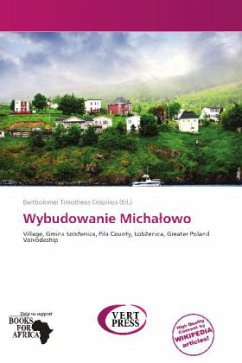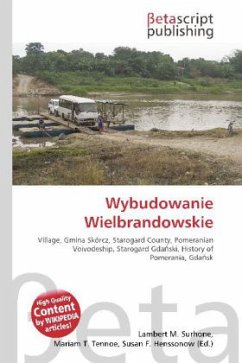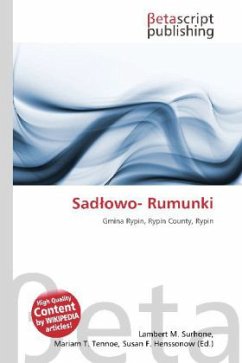
Wybudowanie Micha owo
Versandkostenfrei!
Versandfertig in 6-10 Tagen
23,99 €
inkl. MwSt.

PAYBACK Punkte
12 °P sammeln!
Please note that the content of this book primarily consists of articles available from Wikipedia or other free sources online. Wybudowanie Micha owo is a village in the administrative district of Gmina Brodnica, within Brodnica County, Kuyavian-Pomeranian Voivodeship, in north-central Poland. Settlement in Pomerania started by the end of the Vistula Glacial Stage, about 13,000 years ago. Archeological traces have been found of various cultures during the Stone and Bronze Age, of Veneti and Germanic peoples during the Iron Age and, in the Middle Ages, Slavic tribes and Vikings. Starting in the...
Please note that the content of this book primarily consists of articles available from Wikipedia or other free sources online. Wybudowanie Micha owo is a village in the administrative district of Gmina Brodnica, within Brodnica County, Kuyavian-Pomeranian Voivodeship, in north-central Poland. Settlement in Pomerania started by the end of the Vistula Glacial Stage, about 13,000 years ago. Archeological traces have been found of various cultures during the Stone and Bronze Age, of Veneti and Germanic peoples during the Iron Age and, in the Middle Ages, Slavic tribes and Vikings. Starting in the 10th century, early Polish dukes on several occasions subdued parts of the region from the southeast, while the Holy Roman Empire and Denmark augmented their territory from the west and north. In the High Middle Ages, the area became Christian and was ruled by local dukes of the House of Pomerania (Griffins) and the Samborides, at various times vassals of Denmark, the Holy Roman Empire and Poland. From the late 12th century, the Griffin Duchy of Pomerania stayed with the Holy Roman Empire and the Principality of Rugia with Denmark, while Denmark, Brandenburg, Poland and the Teutonic Knights struggled for control in Samboride Pomerelia.












